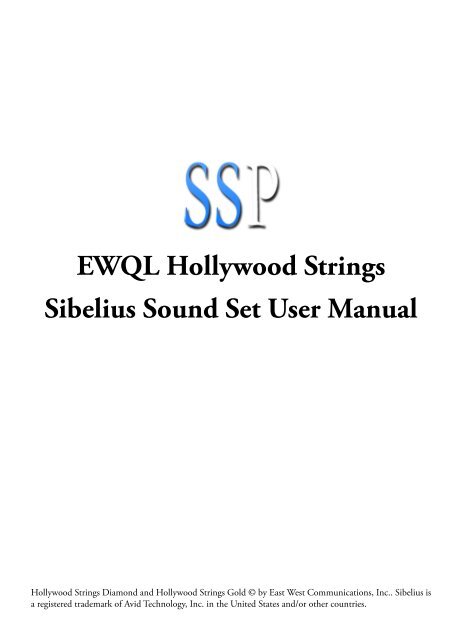
Every day, million of creators build their careers on SoundCloud, sharing new tracks and connecting directly with fans. All it takes is loading an ARIA instance, loading the world instrument(s) you want, assigning a Sibelius Soundworld ID, and youre all set.Share your sounds with the world. Just do a manual sound-set in Sibelius as needed. As for using Garritan World Sounds, thats not a big deal since very few of those instruments need any sort of key switching or special mapping.
Make a duplicate Part in another transposition. 175+ million monhtly listeners.Carlos Kalmar Artistic Director and Principal ConductorThings seem to be changing. Connect directly with your audience for free, instantly.
Fry Foundation.Friday’s concert is being broadcast live on 98.7WFMT and streamed live at wfmt.com.THREE DANCE EPISODES FROM ON THE TOWN (1944)Scored for: piccolo, flute, oboe, English horn, Eb clarinet, bass clarinet, alto saxophone, two horns, three trumpets, three trombones, tuba, timpani, percussion, piano and stringsFirst Grant Park Orchestra performance: June 19, 1993, Kenneth Jean, conductorNot long after his conducting debut with the New York Philharmonic in November 1943, the 25-year-old Leonard Bernstein was approached by choreographer Jerome Robbins to write a ballet about sailors on leave in New York. Reason ReFill, Sonar 7, FL Studio 7, Stylus RMX, ReFX Nexus, Sibelius 5.Tempo molto moderato Allegro moderato - PrestoMajor support for this concert is generously providedBy American Accents Series Sponsor AbelsonTaylorAnd by William Blair, our 2021 Diverse American Voices Series Sponsor.Special support for this concert is providedBy Colleen and Lloyd Fry and the Lloyd A. Those who have stuck with Sibelius 7.5 will apparently still have to grab the BCP.Grant Park Orchestra Carlos Kalmar, conductorMusicians will find that RA has an amazing sound quality and theyll marvel at.
Sounds Not Changing Sibelius 5 Full Musical Called
However, most of Bernstein’s original music was not retained in the film version.Bernstein chose three of the dance episodes from On the Town to form an orchestral suite, which premiered in 1946. The wartime romcom was an immediate success when it premiered in 1944, and MGM quickly bought the rights to make it into a movie starring Gene Kelly and Frank Sinatra, which was released in 1949. They would often erupt in laughter and song, much to the chagrin and amusement of the attending nurses.On the Town, Bernstein’s first musical, retained only the basic plot of Fancy Free, centering on the amorous adventures of three sailors on 24-hour shore leave in New York City during World War II. In fact, Bernstein and Green worked on the musical together while they were both recuperating from surgery in the same hospital—Bernstein for a deviated septum and Green for a tonsillectomy. They enlisted the help of Bernstein’s young friends Betty Comden and Adolph Green to write the book and lyrics. Coming off the ballet’s success, Bernstein and Robbins decided to turn it into a full musical called On the Town.
He laments that without love, New York is just a lonely town. The second episode, “Lonely Town—Pas de Deux,” takes a more melancholic turn as Gabey watches a fellow sailor seduce then abandon a girl in Central Park. In fact, one Boston critic wrote shortly after the premiere that Bernstein’s music was “an energetic blend of Stravinsky and Gershwin,” while veteran theater director George Abbott jokingly called it “that Prokofiev stuff.”The first dance episode is “The Great Lover.” In this scene, Gabey has fallen in love with a subway poster beauty queen dubbed “Miss Turnstiles.” In dogged pursuit of this idealized woman, Gabey falls asleep on the subway and dreams of sweeping her off her feet.The music in this episode reflects both Gabey’s naiveté and determination. Like all of Bernstein’s dance music, the dance music in On the Town rose to a level of orchestral complexity never before seen on Broadway.

The first movement contains the widest variety of musical styles, biggest transformation in mood, and clearest statement of the Ubi caritas theme of the whole concerto. Eventually, the viola’s passionate mood is quelled by the calming influence of the orchestra and is transfigured into something more compassionate and peaceful. The viola soloist enters straight away, as the composer writes, “charged with intensity.” Underneath the turmoil of the viola, the orchestra creates an atmosphere of “blurred color” using fragments of the ancient chant. The movement begins in a mood of questioning and anxiety. The name of the first movement, Caritas, comes from the Gregorian plainchant, Ubi caritas (Ubi caritas et amor, Deus ibi est—Where charity and love are, God is there), the melody of which acts as both a musical and spiritual thread between each of the movements. Brouwer manages to keep the viola soloist in the forefront by using sparser accompanimental textures during the softer moments, offsetting the rich, honey-hued sounds of the viola with a unique combination of harp, marimba, and vibraphone to produce a ringing quality the viola lacks.The concerto follows the loose narrative of an individual’s emotional internal journey (embodied by the soloist).

In subsequent revisions, however, Sibelius wrote an ingenious bridge to connect the two in which the music gains speed almost imperceptibly as the horn motif is repeated, which seamlessly develops into the Allegro moderato.The most famous motif of this symphony comes in the final movement. In the original version, these were two distinct movements, giving the symphony a traditional four-movement structure. The most notable example of this organic quality is the transition between the moderato and the scherzo in the first movement. It is born from various rivulets that seek each other, and in this way the river proceeds wide and powerful toward the sea.” In the Fifth Symphony, the first movement evolves out of the opening horn motif, the music flowing like a river, calmly one minute, then cascading over rapids the next. In 1914 he wrote, “I should like to compare the symphony to a river.


 0 kommentar(er)
0 kommentar(er)
